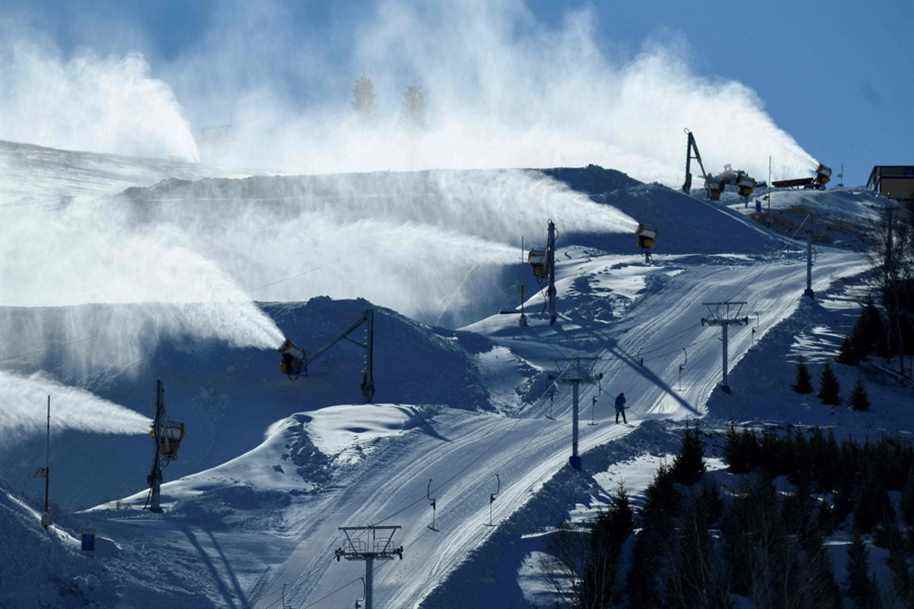(Zhangjiakou ) The contrast is striking. The Genting snow park, where many mountain competitions take place, is carpeted in thick white cover. The rest of the valley is yellow. Or brown. The snow at the Beijing Games is 100% artificial, a first in Olympian history. And what do the athletes think?
Posted at 9:00 a.m.
“That’s a big question! exclaims Jules Burnotte, both feet in the fake snow of Zhangjiakou. The Sherbrooke biathlete is still racing on artificial snow. He is therefore not disoriented by the conditions in the Chinese mountains.
The athlete, dressed in his red coat from Canada, shows the Olympic biathlon track and the half-meter of snow, well tapped. That’s the normal thickness at just about every World Cup in Europe, he said. “The IBU [l’Union internationale de biathlon] wants to be sure that the venues have enough snow to hold a competition even after a storm or during a temperature of 15°C,” he explains.
“No matter the competition site, it takes enough snow to have a continuous surface, with absolutely no rocks. Above all, we don’t want any scratches on our skis”, continues the athlete with thick curly hair.
The artificial snow tracks also give faster races, underlines Charles Pépin, waxer of the Canadian biathlon team and also friend of adolescence of Jules Burnotte.
Natural snowflakes have small prickles, small points. These make the ski slow down while the artificial snow is small balls of ice. So there is less grip and it slides faster.
Charles Pepin,
“The artificial snow, if it’s cold enough, there is a way to compact it so that it looks like real snow, continues his waxer colleague Félix Bérubé-Larochelle. But if it’s hot it can get really soft and it’s like skiing in salt. »
Snowboarder Laurie Blouin has a different take on snow. “Of course, natural snow is better,” she says during a freestyle downhill training session. “Here, you can see that there are a lot of people passing by and it gets icy really quickly,” she said, pointing to the track where the athletes perform impressive jumps.
Above all, natural snow, which is softer, hurts less when falling, she adds, a factor not to be overlooked when practicing an extreme sport such as acrobatic descent (slopestyle) or big jump (big air). .
“It’s still crazy what they’ve built here,” she admits of the three jumps as well as the large decorative bricks that were made out of snow.
Little rainfall
The Zhangjiakou region, where competitions in biathlon, cross-country skiing, freestyle skiing, ski jumping and snowboarding are held, is 200 km northwest of Beijing. It takes nearly four hours to travel between the two.
The mountains are covered with low shrubs and some conifers. In this arid climate, it is not so surprising that there is so little vegetation. And also little snow.
Since our arrival, the sun has been shining and the sky is always blue. But the temperatures are cold (around -15°C during the day, -22°C at night).
Scarce rainfall meant Games organizers had to blow 1.2 million cubic tons of snow and spread it on the slopes with snow groomers, according to the magazine. Sports Illustrated. That’s the equivalent of 480 Olympic swimming pools filled with snow.
Before the Beijing Games, the cities of Vancouver, Sochi and PyeongChang also used artificial snow. Some 90% of that used in South Korea was man-made.
The Olympic movement is also facing a lot of criticism for the large amount of water that will be needed for snowmaking and the impact on the environment.
But the organizing committee claims to have used rainwater to produce the snow. He also maintains that the megaramp set up for the big jump (big air) is equipped with reservoirs to collect water from the melted snow.

